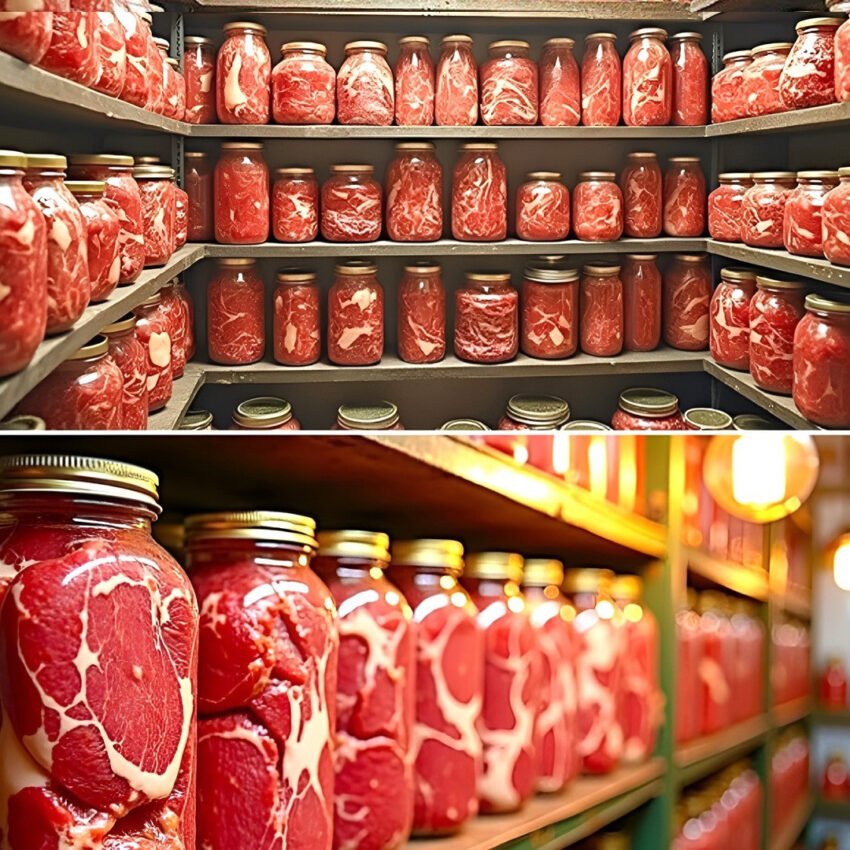The Secret: A Combination of Salt and Drying (Curing)
The method described is almost certainly the ancient process of dry-curing, most famously used to make products like:
-
Salt Pork & Salt Cod
-
Prosciutto, Serrano Ham, and other dry-cured hams
-
Salami and Pepperoni
-
Biltong and Pemmican (which incorporates fat and berries)
This isn’t a single trick but a proven scientific process that creates an environment where harmful bacteria cannot thrive.
How It Works: The Science of Preservation
The method uses a few key principles to make meat inhospitable to the microbes that cause spoilage and illness:
-
Dehydration (Removing Water): Bacteria and enzymes need water to grow and function. By slowly drawing out almost all the moisture from the meat through salting and air-drying, you eliminate the primary requirement for life and chemical spoilage.
-
Osmosis (The Power of Salt): When you pack meat in salt, a process called osmosis occurs. The high concentration of salt on the outside draws the moisture out from the inside of the meat cells. This brine (saltwater solution) that forms on the surface then gets reabsorbed, carrying the salt deep into the meat.
-
Creating a Hostile Environment: Salt is directly toxic to many microorganisms. The high salt concentration:
-
Disrupts their internal water balance, causing them to shrivel and die.
-
Inhibits the activity of proteolytic enzymes, which break down protein and cause rancidity.
-
-
Smoking (Often a Final Step): Many traditional methods add a step of cold-smoking. The smoke adds phenolic compounds that act as preservatives and antioxidants, further protecting the meat and adding flavor.
How It’s Done (The Basic Process):
This is a simplified overview. Doing this safely requires careful attention to temperature, humidity, and salt ratios.
-
Curing: The fresh meat is thoroughly covered in a mixture of salt and often other ingredients like sugar (to balance flavor), and spices (e.g., black pepper, juniper berries). Some methods use a salt-packed “dry cure,” while others use a “wet cure” or brine (salt dissolved in water). For very long-term storage, the dry cure is essential.
-
Pressing and Drying: The meat is often pressed to squeeze out remaining moisture. It is then rinsed off and moved to a controlled environment to dry.
-
Air-Drying: The meat is hung in a cool, dark, well-ventilated place with low humidity (ideally 55-65°F or 13-18°C). This process can take weeks, months, or even years for large cuts like whole hams. The meat loses a significant amount of its weight as water evaporates, becoming hard and dense.
The Result:
The final product is a piece of meat that is safe to store at room temperature for months or years. It is intensely flavorful, concentrated, and must typically be soaked in water to rehydrate and desalinate before cooking.
Important Considerations and Warnings:
-
It’s Not Foolproof: If done incorrectly (e.g., not enough salt, too warm/humid an environment), harmful bacteria like Clostridium botulinum (which causes botulism) can still grow.
-
Modern Use: While this was a necessity before refrigeration, it is now primarily used to create specialty foods with desired flavors and textures, not out of necessity.
-
Nitrates/Nitrites: Many modern curing recipes include pink curing salt (Prague Powder #1 or #2), which contains sodium nitrite. This is particularly important for preventing botulism in cured meats that are not dried extensively, like bacon. It is not the same as table salt and must be used with precise measurement.
In short, the “secret” is no secret at all—it’s a foundational technique of human civilization. By using salt to remove water and create a barren environment for bacteria, our ancestors could preserve the nutrient-rich energy of meat indefinitely, enabling survival through winters and long journeys.
